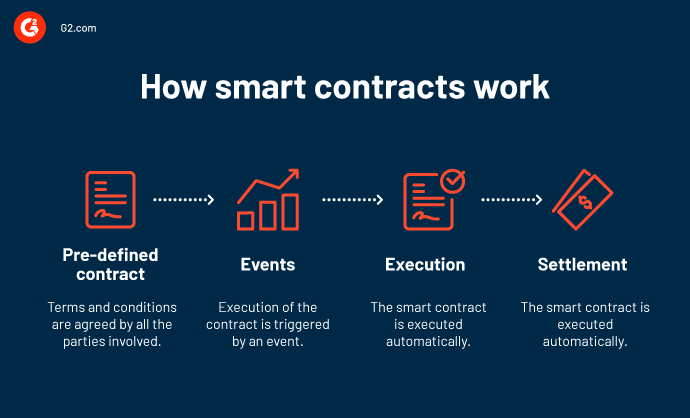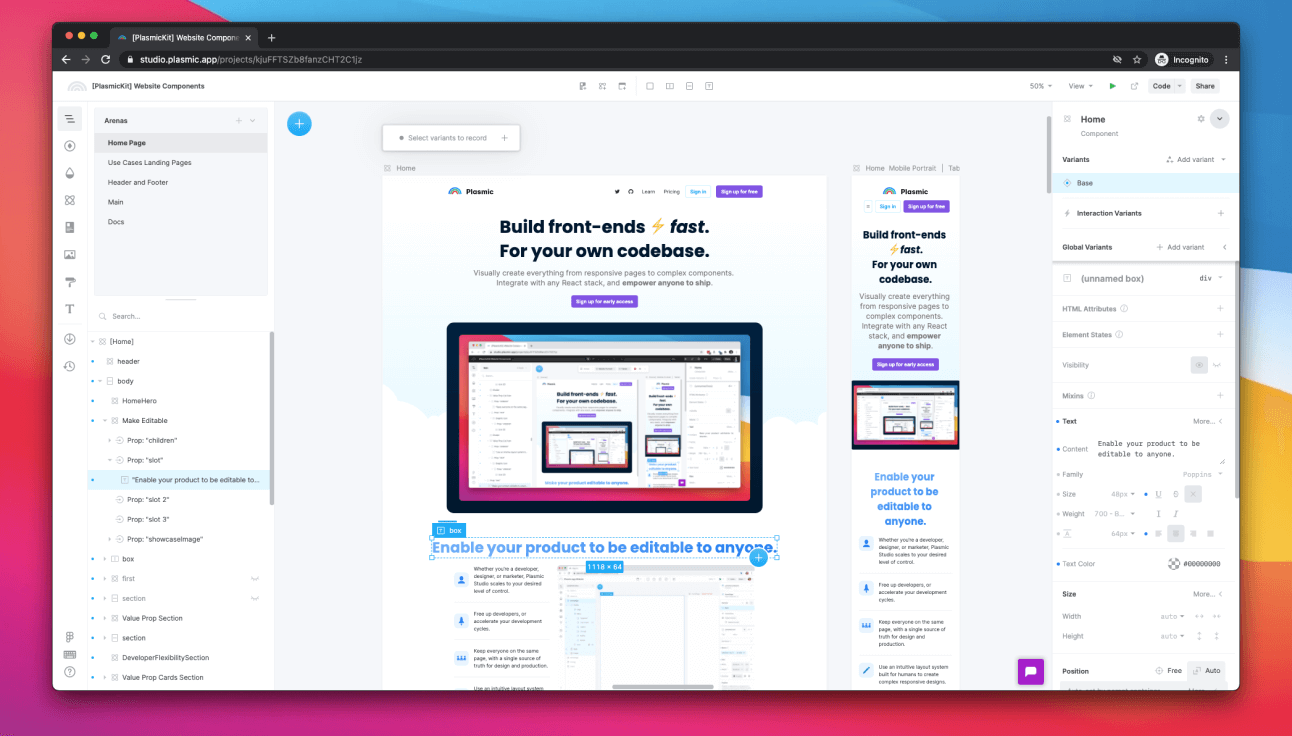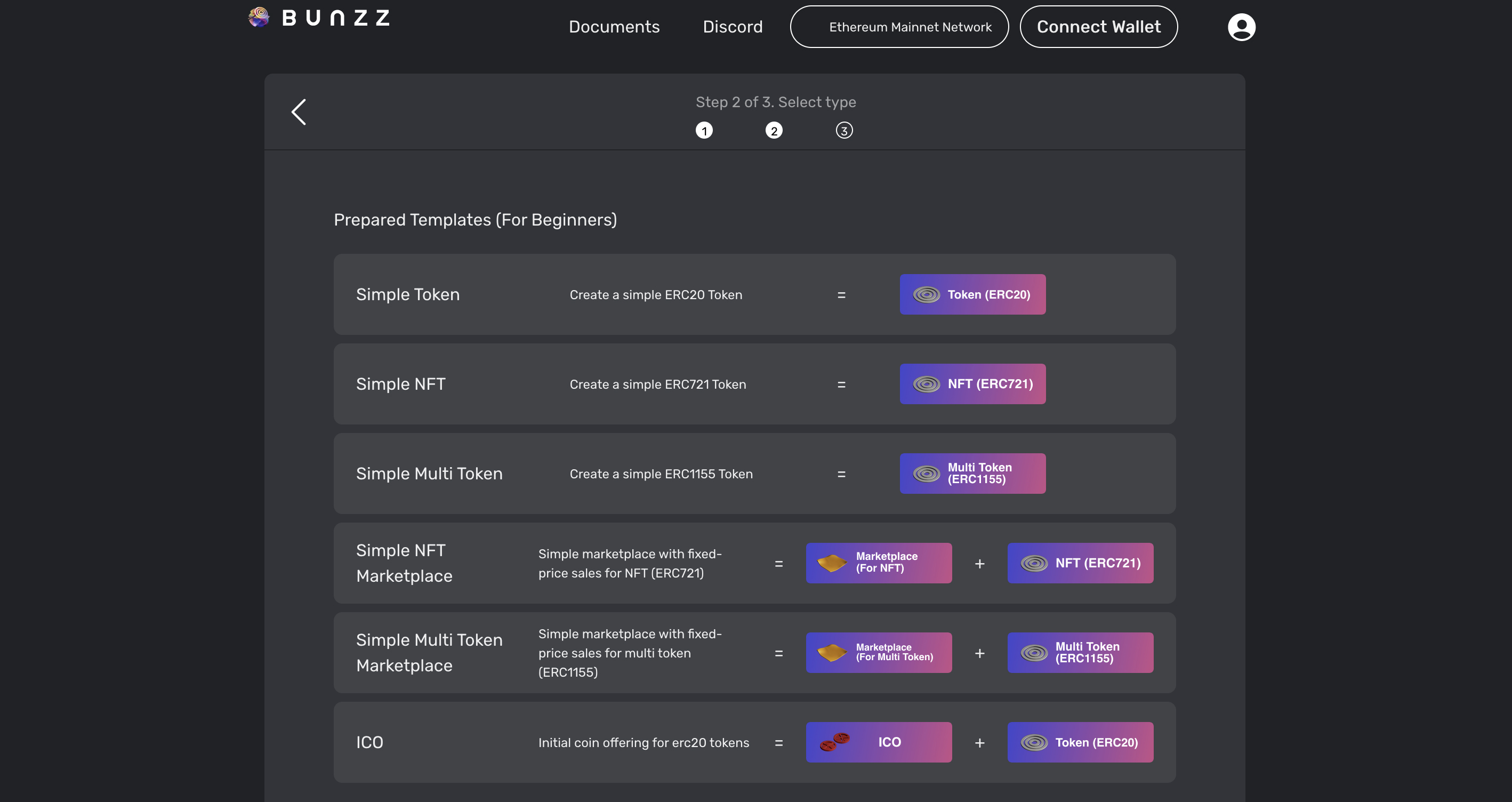How to Create Decentralized Apps with No-Code
- Authors

- Jeremy Moser
- Last updated
The future of technology is looking better thanks to blockchain technology. This P2P shared ledger records transactions and tracks assets that occur within a business network. The great thing about blockchain is that it’s secure and private.
You’ve likely heard blockchain mentioned in reference to cryptocurrencies like Bitcoin or Non-Fungible Tokens (NFTs). While blockchain is the technology that makes all of this possible, it can also allow developers to create everything from safe and personalized advertising to applications that come with heightened security.
It’s those applications we’re discussing here. These decentralized applications, also known as DApps, are becoming a lot more popular as blockchain technology spreads into the mainstream. These apps resist censorship and allow for transactions within a public ledger that completely does away with the need for single-point validation. In other words, these apps won’t have a central point of failure, and all the power is in the hands of users.
As blockchain becomes more widespread, the demand for DApps will only grow. That’s why it’s important to understand how they work, how they’re made, and how your company can create them.
App creation is already a code-heavy process. Add blockchain and smart contracts to the list, and you’re looking at a lot of specialized knowledge that only a select few have. But thanks to the power of no-code platforms, like Plasmic, you can design both the customer-facing front ends of your decentralized apps and the smart contracts that run them.
How is this possible? Read on to find out.
What Do We Mean By Decentralized Apps?
The first thing to remember about decentralized apps is that they run on blockchain technology. The blockchain database stores your data in linked blocks. This data can’t be deleted or modified in any way. The blockchain can then be used to track payments, accounts, orders, and more in a way that’s guaranteed to be accurate.
:max_bytes(150000):strip_icc():format(webp)/Blockchain_final-086b5b7b9ef74ecf9f20fe627dba1e34.png)
A decentralized app uses this technology to create a more powerful form of application known as Web3. The common everyday apps you constantly interact with without blockchain backing are known as Web2.
Decentralized apps are created using P2P networks and work off of smart contracts, aka Web3 contracts. These smart contracts are essentially agreements created through blockchain code. As such, they can’t be destroyed or altered in any way, making them far more secure than a simple paper contract or agreement. There are three basic variables that make up any smart contract.
They are:
- The parties engaging in the transaction
- The type of asset exchanged in the transaction
- The specific conditions of the transaction
Because you’ve created specific conditions for the smart contract, you can be sure that the agreement will go through as planned. Transactions won’t go through unless each condition is met. This eliminates the need for an intermediary to facilitate any transaction or deal. It also allows transactions to occur between anonymous parties.
Let’s take a simple application transaction as an example. If a customer purchases from your decentralized app, the parties outlined in the smart contract are your company and the buyer. The assets exchanged are money and an item or service you must deliver to the customer.
The conditions could be funds issued by the customer, a digital signature, and the shipping of the purchased item. The funds will be held on the blockchain in a digital wallet and only released when the signature is received and the item has shipped. This ensures that no party can scam the other.
So, to make a long story slightly less long, a decentralized app to the customer looks and works just like a regular Web2 application. However, it uses blockchain technology and smart contracts that facilitate secure, anonymous transactions.
Why Are Decentralized Apps Gaining Popularity?
Now that you understand what decentralized apps are, it’s time to talk about why you’d want to create one. There are several benefits to using blockchain technology to power your app. The first and most crucial benefit, as we said, is enhanced privacy and security.
Most customers don’t want their personal information being bought and sold by companies. It’s an issue that’s created a veritable avalanche of advertising that buries every one of us daily. But when you’re using smart contracts, there’s no need for invasive sign-up processes that want all of your information.
Because the blockchain network facilitates smart contracts, you can create a fully anonymous customer experience. On the user side, there’s a crypto wallet where the funds sit until the smart contract conditions are met. Once the system confirms everything is on the up and up, the funds are released to your business, completing the contract.

It’s also a lot more secure. For example, Amazon has developed a distributed ledger using blockchain, verifying that the items sold on the e-commerce platform are authentic and made it out to customers.
Additionally, decentralized apps have immutability, which means that no one can alter any of the information stored on the blockchain in any way. That means no hackers tampering with your transactions. On top of that, the blockchain encrypts all of its information, meaning that no outside party will be able to see the details of your transactions.
A decentralized application can also resist censorship. Because it lacks the single point of failure that Web2 apps carry, single authorities are unable to censor it or block access. These platforms are also typically open-sourced, which means they can be maintained and improved upon by the community.
Additionally, because blockchain is used so integrally with cryptocurrencies like Bitcoin and Ethereum, it’s far easier to accept crypto as a form of payment through your decentralized app.
How are Decentralized Apps Normally Created?
At this point, you probably think that decentralized applications sound like a great use of your time and money. You’re likely chomping at the bit to start developing one. But when you look into the decentralized app development process, you’ll find it’s a highly specialized field that requires a ton of advanced coding knowledge.
The first thing you have to do when developing a decentralized app is lay out the actual app architecture. This involves designing what kind of smart contracts you’re going to need. Smart contract development is the most important and complicated part of creating a decentralized app. It’s an architecture built on the blockchain that lays out your business logic.
This process involves a ton of specialized coding and testing. When done from scratch, it can take months of work. This isn’t even taking into account the creation of your customer-facing front-end. If you’re building that from scratch as well, it’s going to take even longer.
Thankfully, no-code options are available for both the customer-facing components of a decentralized app and the creation of the blockchain-powered smart contracts that run them. In the following section, we’ll walk you through how to create your decentralized application without ever writing a single line of code.
How Can You Simplify The DApp Creation Process With No Code?
No-code platforms like Plasmic have been helping users like you create attractive and functional apps for years. Once upon a time, the power of website and app development was in the hands of only a select few who charged a pretty penny for their highly specialized services.
Now, thanks to no-code platforms, app development can become as easy as dragging and dropping components onto a page. Even authentication becomes easy with no code. Some no-code platforms allow users to easily integrate OAuth with various services, such as Google and Facebook, through pre-built components that can be added to apps without any coding required.
But smart contracts are another matter altogether. While you’re able to create a Web2 application on platforms like Plasmic, you’ll need another specialized plugin or platform to develop the smart contracts that guide Web3 apps.
Let’s roll up our sleeves and get started.
Choose Your Platforms
The first thing you must do when embarking on a no-code decentralized app development journey is decide which no-code platforms you’re going to use. When choosing the right platform for you, remember to keep a few things top of mind.
For starters, can the platform you choose do what you want it to do? Can you create the kind of app you’re dreaming of when using this service?
Then, how much will the platform cost? Does it fit comfortably in your budget? Because you’re using two platforms for the development of a single app, you’ll need to consider the cost of both.
Finally, how user-friendly are these platforms? Will you or members of your team be able to use this platform without having to spend a ton of time learning the ropes? Is it intuitive? Does it include a drag-and-drop editor that’ll allow you to customize your app in exactly the right way?
Once you’ve chosen your platforms, it’s time to get to work.
Develop Customer Facing Front-End
You can use Plasmic to build out the front end of your DApp. With our visual page builder, you’ll be able to implement every eye-catching component you’ve ever dreamt of. Using a feature-filled platform like this, it’s possible to create a customer-centric UI that’ll do everything needed without entering even a line of code.

The collaborative element of the platform will allow your team to work together on a singular vision without having to wait for access.
Once you have a perfect look and feel that plays into the wants and needs of your key users, it’s time to start working on your smart contracts.
Create No-Code Smart Contracts
Thanks to the power of no-code platforms, you can create smart contracts with little to no knowledge of how coding languages work. Several no-code smart contract platforms out there can help you develop exactly what you need in only a fraction of the time.
For example, the platform Bunzz allows any user to develop smart contracts for decentralized applications. The company even boasts that smart contract development can boil down to just a few clicks.

When you click to create a new project in Bunzz, you can generate modules — a group of premade smart contracts. Users can select preset module combinations or generate their own that can be used for multiple functions. Once you have all of your modules set up on your dashboard, it’s a simple matter to deploy these contracts with the push of a button.
Connect Smart Contracts to the Front-End
Once you’ve created your front-end and smart contracts, you’ll be able to connect them and fully launch your decentralized application. Some smart contract generators make this process easy, providing a plugin or an integration feature that makes the connection with just a few clicks.
However, if the platforms you choose aren’t compatible in this way, there’s another, albeit longer, option. For more details on connecting your smart contracts with a front-end from scratch, click here.
Conclusion
Decentralized apps powered by smart contracts and blockchain technology are the future of app development. These highly secure and private platforms are perfect for a modern audience that’s tired of giving up precious information to faceless companies.
When it comes time to develop your decentralized app, remember that you don’t have to break the bank by bringing on expensive development experts. It’s possible to create both your customer-facing front-end and smart contracts with no code whatsoever.
Simply choose the right platforms that fit your specifications, budget, and skill level, develop both ends of your decentralized app, and bring them together to create a seamless app experience for your audience.
By investing in Web3 apps now, you’ll get a head start on what’s proving to be one of the most significant technological advancements in a very long time. If you want the best option for creating a stunning front end, try Plasmic for free today.
Follow @plasmicapp on Twitter for the latest updates.